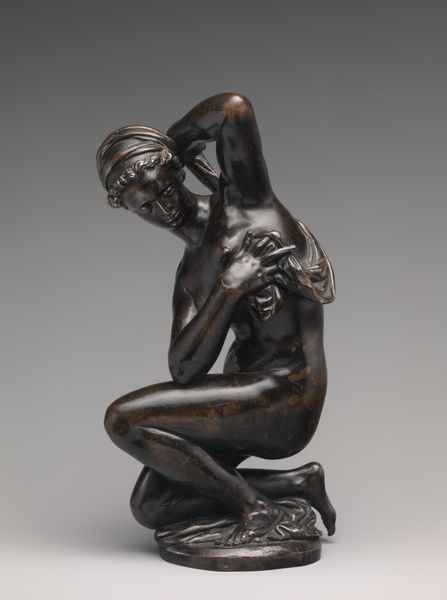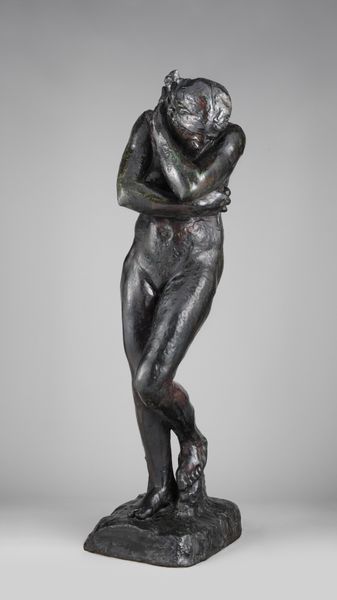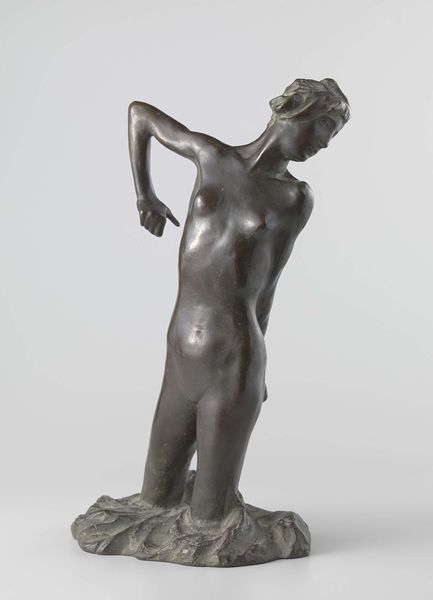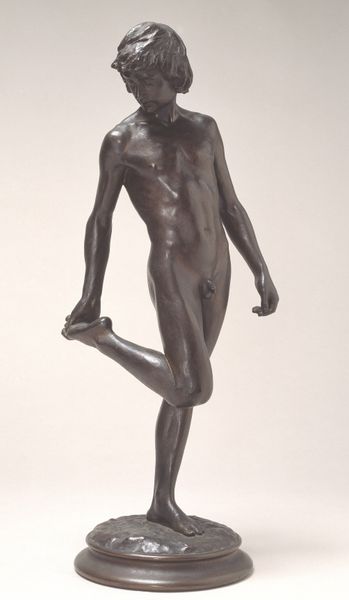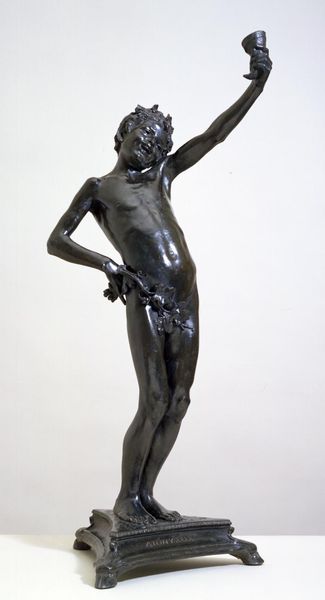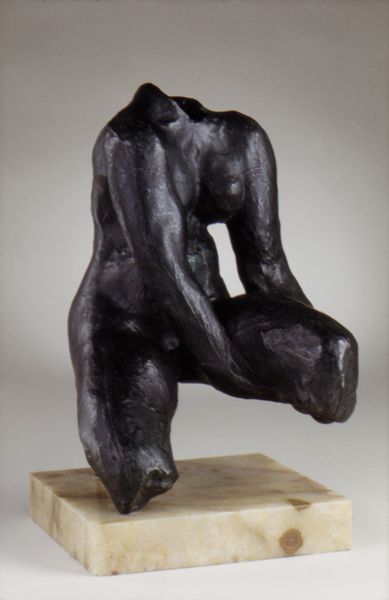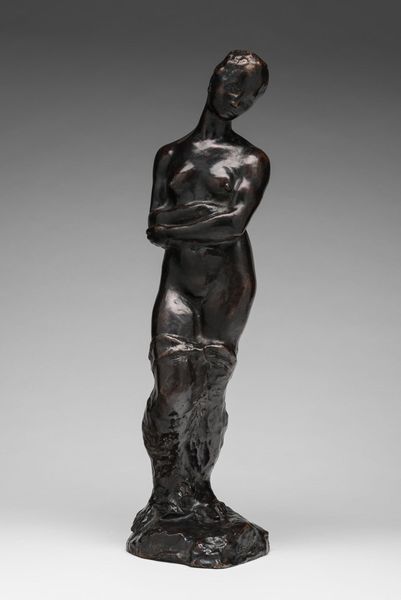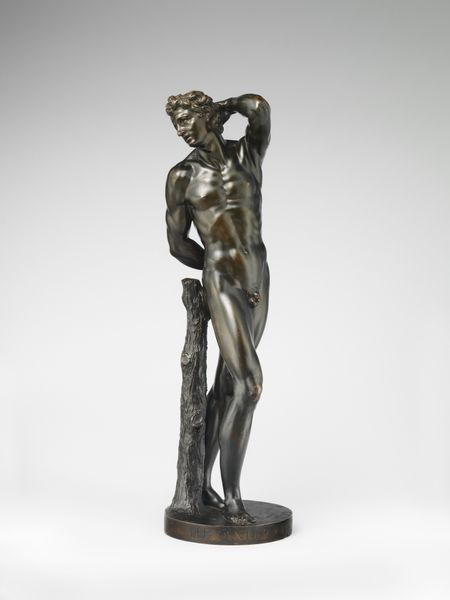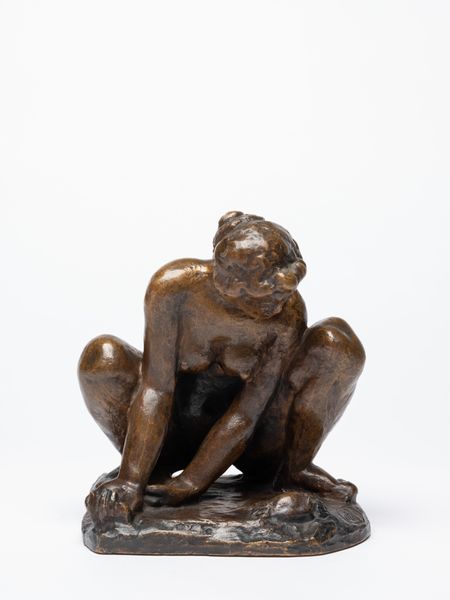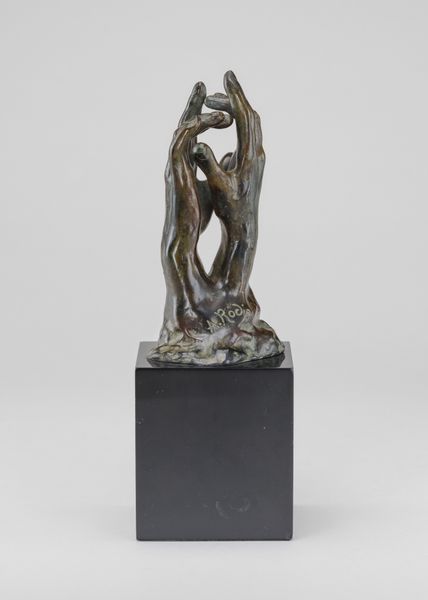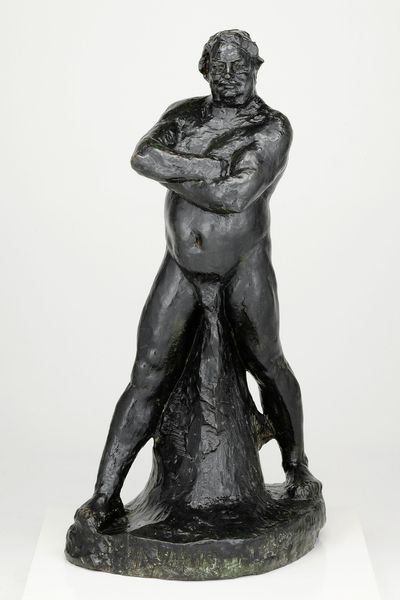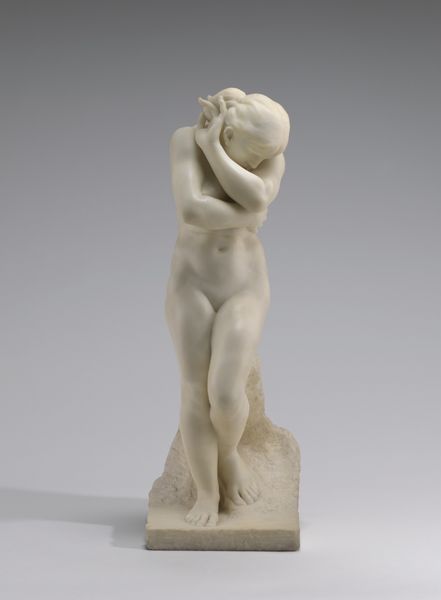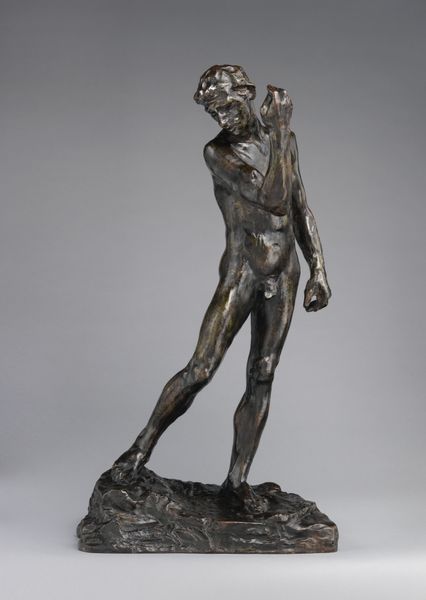
Dimensions: 174.2 x 47 x 57 cm
Copyright: Public Domain
Editor: So here we have Rodin’s bronze sculpture, *Eve*, conceived around 1881 and cast later. The figure's posture immediately conveys a sense of shame or despair. What strikes me most is the closed off form, but what are your thoughts? Curator: I agree with your assessment. Let’s consider the figure’s construction. The crossed arms and bowed head create a powerful sense of enclosure. The rough, unpolished texture of the bronze adds to this feeling, doesn’t it? It deflects a classical appreciation of beauty. Editor: Yes, definitely. There's a rawness in the surface that seems intentional, disrupting any easy aestheticization. I wonder, then, how Rodin might have intended the material itself to contribute to the emotional impact? Curator: Consider how the shadows play across the undulating surface of the bronze, creating a sense of internal turmoil. The heaviness of the material also grounds the figure, preventing her from rising above her burden. Does the imbalance of her stance also contribute to the sculpture's expressive quality? Editor: I see that now! The precarious balance adds another layer to the feeling of unease and internal conflict that I initially sensed. Do you think the pose references the tradition of the Venus pudica? Curator: That is quite astute! It recalls, in reverse, the Venus Pudica gesture. But Rodin disrupts that convention. Instead of modestly covering her body, she seems to be collapsing in on herself. This transformation of a classical form to convey psychological depth is central to the artwork’s powerful expression. Editor: This conversation has really illuminated how Rodin uses form and material to create such a potent emotional experience. It's far more complex than I initially appreciated! Curator: Indeed. By analyzing its formal properties, we unveil Rodin's expressive innovation through bronze and his masterful rendering of inner human states.
Comments
stadelmuseum about 2 years ago
⋮
Both shamefully and protectively, Rodin’s “Eve” wraps one arm around her upper body and uses the other to hide her face. The entire posture as well as her left hand’s defensive gesture are an expression of the realisation of the Fall. The sculpture was one of the first to be created in 1881/82 for the large project of the “Gates of Hell”. However, due to his model’s pregnancy, the plaster model remained unfinished in the studio. In 1899, Rodin still exhibited the sculpture because it was precisely the state of unfinishedness that was to prove significant for his work: “Eve” illustrates his important concept of “modelé”, the relinquishment of “worthless” details. At the same time, Rodin enlivened his sculptures with different types of surfaces and the associated play of light.
Join the conversation
Join millions of artists and users on Artera today and experience the ultimate creative platform.
